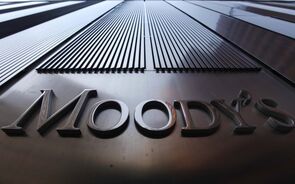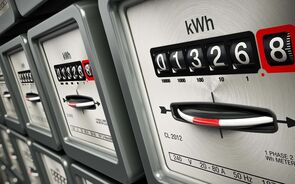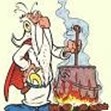Cramer- "Hedges Could Get Burned Pressing Shorts"
1 Mensagem
|Página 1 de 1
Cramer- "Hedges Could Get Burned Pressing Shorts"
Aqui fica um artigo muito interessante do Cramer. O facto de ter passado tantos anos à frente de um "hedge fund" (com resultados muito consistentes, mesmo em anos muito maus), dá-lhe um grande à vontade para falar sobre o que vai na cabeça dos "hedge funds".
Há quem não goste dele. Eu gosto.
Ulisses
"Hedges Could Get Burned Pressing Shorts"
By James J. Cramer
08/19/2003 12:47 PM EDT
"What doesn't kill this market definitely makes it stronger. The fact that 50 million people lost power on Thursday, something that should have been a sign of weakness, turns out to be a sign of strength? Is that possible?
I think it is possible if you bet against it, and it's possible if you shorted the market betting that the market would come to its senses in some sort of "logical" epiphany. I think it is possible that the market can go higher simply because so many funds pressed a bet that it would go lower, but nothing happened.
When you consider how hard it has been to get the Dow over 9400, we can't just dismiss it as errant enthusiasm. There are forces at work that are truly driving it. Right now, the cohort that is driving it, the cohort that has driven it all year, is the hedge fund cohort.
Most hedge funds that have survived the last three years did so by having one foot out at all times. If they have any long-side conviction, it tends to be in oddball names or names that won't react with the Dow. The hedge fund "bias" is to be 50% long at most.
On days when the Nasdaq is up 2%, that bias is a killer. On days when the Dow rallies to 9400, that bias destroys any hope of catching up with the averages or any of the long funds.
But alas, there is always "hope," hope that some event will occur, some tragedy/calamity of some proportion, that will drive the market lower. That tragedy/calamity is the opportunity to pick up 3% to 5% from the downside.
Let me explain the math. Let's say because of your bias you are only up 6% right now. For guys like me, performance guys, 6% is, well, awful. Hedge fund managers can tell you that 6% is just fine because they are running conservatively, with a balanced book, that will protect their investors from the downside.
But that's just a pile of Wall Street gibberish.
Despite numerous attempts by hedge funds to lower the bar to their investors, the simple fact is that these are rich people and they can read where the Dow and the S&P and the Nazz are without your help, and they can subtract your performance from those benchmarks and figure out how much you didn't make them.
How do I know this? 1) I had it explained to me about a gazillion times by my partners or their advisers, and 2) As a rich person/investor myself, I can tell you it comes rather naturally. (Call me a conceited grouch, but some things are self-evident.)
So what do you do if you are only up 6% and the averages are double or triple that, depending on which benchmark you want to torture yourself with?
Simple: You wait for some sort of event that you divine will be huge and you really press it.
SARS was that kind of event. The war in Iraq was that kind of event. The unemployment rate is that kind of event. And, most definitely, the blackout is that kind of an event. These are events that, if something really goes awry, if confidence is really shaken, you should be able to catch a 4% to 7% downdraft. Given the way that many hedge funds are set up, one foot out, but still with existing longs, if the bias can be bent to be sharply negative, that 4% to 7% could translate into a 3% to 5% gain for your fund.
Now, if you pick up that gain on top of the 6% that you are up, you can taste the double-digit gains. The Dow will, after the calamity, be up about the same as you, or less. The S&P and the Nazz will be well within striking distance. Only that kind of downside move would give you that catch-up, would put you back in the game. And as the months tick by -- and if you are a hedge fund manager, believe me, the months fly when you are behind the market -- you increasingly have to take ever-bigger chances that this selloff will be the kahuna, the one that puts you back in the game.
You short the S&P using Spyders. You short the QQQs. You buy puts on both.
You trot out in-the-money puts on the highest correlatives, names like Caterpillar and 3M and Wal-Mart and Lowe's, as well as the most overvalued Nazz names like KLA-Tencor and Novellus.
You tee up a bunch of overbought indices, maybe the Morgan Stanley Cyclical Index, or the Bank Index -- hey, didn't banks' ATM machines get hurt? Aren't they vulnerable? And, of course, you bet against Yahoo! ,eBay, InterActiveCorp and Amazon because they are "done" going up and are now going down -- like you can really predict that type of stock behavior.
You do these things on a Friday during expiration or maybe on the Thursday aftermarket session when some firms didn't even know how bad the blackout would be -- the fools -- and you wait. You wait for sellers to realize how awful the blackout really was, how fragile and terrorist-prone we are, how unprepared and easily shut down we are. And when they have taken the market down 4% to 7%, you cover and go long and you have caught up with the bad guys, the long-only funds and the ones that mimic the averages.
You figure the worst that happens is that you quickly unwind the positions and get back to your normal underinvested style.
Ahh, but there is a problem. These puts, these shorts, aren't seamless. And given the groupthink that exists among all like cohorts, these positions quickly become crowded. To take them off easily is a fiction, best left for telling to the real stupid partners you have, the ones from arts and entertainment, or from thug businesses where they don't know puts from calls.
Consequently, you lose on the go-out. Sometimes you lose a lot. A strategy meant to gain 3% to 5% suddenly costs you 1% to 2% on the go-out. Worse, your longs aren't the types of longs that are going up. The longs that are going up are precisely what you shorted! Shocker.
Next thing you know, the averages are up a couple of percentage points and you are down a couple. They have widened the gap against you and now it's almost September and the market is breaking out to the upside on light volume -- your volume -- and you scramble to get long the same stuff you were short because you figure, what the heck, I can't win on the downside, so I will take some shots on the upside. You overcover, you take down some 3M against the puts and blow out the puts.
Sometimes that will work. That's where we are now. Most times it won't. We will get overbought, to use Helene Meisler's phraseology, or we will catch some sort of downgrade, a la Smith Barney's 3M downgrade, because the reason why we are where we are has more to do with the panic cover and buy than it does with the fundamentals.
Stepping back, what's wrong with all of this? Part of what is wrong is that this game plan, this post-9/11 game plan, requires more damage to the economy than the hedge funds are willing to recognize. SARS, the war, the blackout, these are not potent events. The unemployment rate? Not potent vs. tax cuts and refis and Fed cuts. The damage the hedge funds expect is reduced from number cuts to the psychological, and you aren't going to shake out the longs on the psychological, especially because the longs didn't even sell when the fundamentals collapsed in 2000! They only sell when they have money taken away. They are dedicated, too, dedicated to be reckless with long-only bets because that's what they perceive they are paid to do.
The consequence? Big up days like yesterday where, on light volume, hedge funds frantically cover and gap up both stocks and indices. We are now left with ever-more-desperate hedge funds and ever-more-confident long-only funds.
Which means we aren't done going up. Which means that we can still go higher, whether it is right or not! "
(in www.realmoney.com)
Há quem não goste dele. Eu gosto.
Ulisses
"Hedges Could Get Burned Pressing Shorts"
By James J. Cramer
08/19/2003 12:47 PM EDT
"What doesn't kill this market definitely makes it stronger. The fact that 50 million people lost power on Thursday, something that should have been a sign of weakness, turns out to be a sign of strength? Is that possible?
I think it is possible if you bet against it, and it's possible if you shorted the market betting that the market would come to its senses in some sort of "logical" epiphany. I think it is possible that the market can go higher simply because so many funds pressed a bet that it would go lower, but nothing happened.
When you consider how hard it has been to get the Dow over 9400, we can't just dismiss it as errant enthusiasm. There are forces at work that are truly driving it. Right now, the cohort that is driving it, the cohort that has driven it all year, is the hedge fund cohort.
Most hedge funds that have survived the last three years did so by having one foot out at all times. If they have any long-side conviction, it tends to be in oddball names or names that won't react with the Dow. The hedge fund "bias" is to be 50% long at most.
On days when the Nasdaq is up 2%, that bias is a killer. On days when the Dow rallies to 9400, that bias destroys any hope of catching up with the averages or any of the long funds.
But alas, there is always "hope," hope that some event will occur, some tragedy/calamity of some proportion, that will drive the market lower. That tragedy/calamity is the opportunity to pick up 3% to 5% from the downside.
Let me explain the math. Let's say because of your bias you are only up 6% right now. For guys like me, performance guys, 6% is, well, awful. Hedge fund managers can tell you that 6% is just fine because they are running conservatively, with a balanced book, that will protect their investors from the downside.
But that's just a pile of Wall Street gibberish.
Despite numerous attempts by hedge funds to lower the bar to their investors, the simple fact is that these are rich people and they can read where the Dow and the S&P and the Nazz are without your help, and they can subtract your performance from those benchmarks and figure out how much you didn't make them.
How do I know this? 1) I had it explained to me about a gazillion times by my partners or their advisers, and 2) As a rich person/investor myself, I can tell you it comes rather naturally. (Call me a conceited grouch, but some things are self-evident.)
So what do you do if you are only up 6% and the averages are double or triple that, depending on which benchmark you want to torture yourself with?
Simple: You wait for some sort of event that you divine will be huge and you really press it.
SARS was that kind of event. The war in Iraq was that kind of event. The unemployment rate is that kind of event. And, most definitely, the blackout is that kind of an event. These are events that, if something really goes awry, if confidence is really shaken, you should be able to catch a 4% to 7% downdraft. Given the way that many hedge funds are set up, one foot out, but still with existing longs, if the bias can be bent to be sharply negative, that 4% to 7% could translate into a 3% to 5% gain for your fund.
Now, if you pick up that gain on top of the 6% that you are up, you can taste the double-digit gains. The Dow will, after the calamity, be up about the same as you, or less. The S&P and the Nazz will be well within striking distance. Only that kind of downside move would give you that catch-up, would put you back in the game. And as the months tick by -- and if you are a hedge fund manager, believe me, the months fly when you are behind the market -- you increasingly have to take ever-bigger chances that this selloff will be the kahuna, the one that puts you back in the game.
You short the S&P using Spyders. You short the QQQs. You buy puts on both.
You trot out in-the-money puts on the highest correlatives, names like Caterpillar and 3M and Wal-Mart and Lowe's, as well as the most overvalued Nazz names like KLA-Tencor and Novellus.
You tee up a bunch of overbought indices, maybe the Morgan Stanley Cyclical Index, or the Bank Index -- hey, didn't banks' ATM machines get hurt? Aren't they vulnerable? And, of course, you bet against Yahoo! ,eBay, InterActiveCorp and Amazon because they are "done" going up and are now going down -- like you can really predict that type of stock behavior.
You do these things on a Friday during expiration or maybe on the Thursday aftermarket session when some firms didn't even know how bad the blackout would be -- the fools -- and you wait. You wait for sellers to realize how awful the blackout really was, how fragile and terrorist-prone we are, how unprepared and easily shut down we are. And when they have taken the market down 4% to 7%, you cover and go long and you have caught up with the bad guys, the long-only funds and the ones that mimic the averages.
You figure the worst that happens is that you quickly unwind the positions and get back to your normal underinvested style.
Ahh, but there is a problem. These puts, these shorts, aren't seamless. And given the groupthink that exists among all like cohorts, these positions quickly become crowded. To take them off easily is a fiction, best left for telling to the real stupid partners you have, the ones from arts and entertainment, or from thug businesses where they don't know puts from calls.
Consequently, you lose on the go-out. Sometimes you lose a lot. A strategy meant to gain 3% to 5% suddenly costs you 1% to 2% on the go-out. Worse, your longs aren't the types of longs that are going up. The longs that are going up are precisely what you shorted! Shocker.
Next thing you know, the averages are up a couple of percentage points and you are down a couple. They have widened the gap against you and now it's almost September and the market is breaking out to the upside on light volume -- your volume -- and you scramble to get long the same stuff you were short because you figure, what the heck, I can't win on the downside, so I will take some shots on the upside. You overcover, you take down some 3M against the puts and blow out the puts.
Sometimes that will work. That's where we are now. Most times it won't. We will get overbought, to use Helene Meisler's phraseology, or we will catch some sort of downgrade, a la Smith Barney's 3M downgrade, because the reason why we are where we are has more to do with the panic cover and buy than it does with the fundamentals.
Stepping back, what's wrong with all of this? Part of what is wrong is that this game plan, this post-9/11 game plan, requires more damage to the economy than the hedge funds are willing to recognize. SARS, the war, the blackout, these are not potent events. The unemployment rate? Not potent vs. tax cuts and refis and Fed cuts. The damage the hedge funds expect is reduced from number cuts to the psychological, and you aren't going to shake out the longs on the psychological, especially because the longs didn't even sell when the fundamentals collapsed in 2000! They only sell when they have money taken away. They are dedicated, too, dedicated to be reckless with long-only bets because that's what they perceive they are paid to do.
The consequence? Big up days like yesterday where, on light volume, hedge funds frantically cover and gap up both stocks and indices. We are now left with ever-more-desperate hedge funds and ever-more-confident long-only funds.
Which means we aren't done going up. Which means that we can still go higher, whether it is right or not! "
(in www.realmoney.com)
1 Mensagem
|Página 1 de 1
Quem está ligado:



